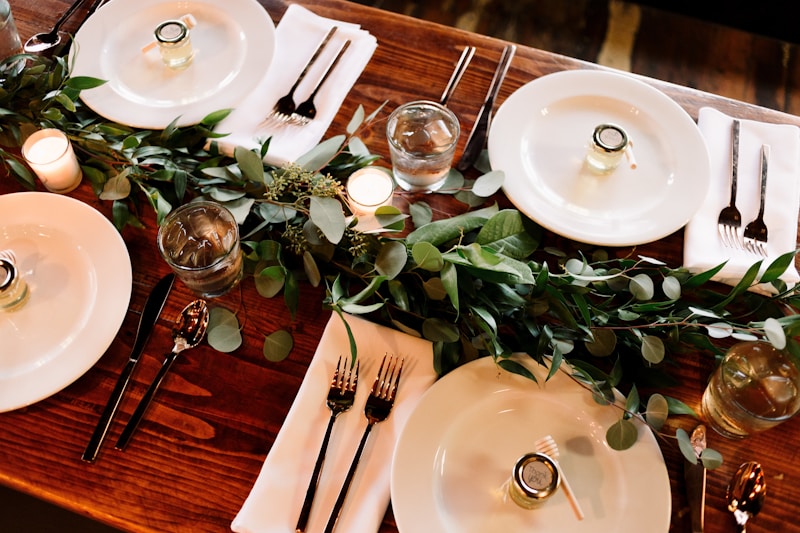Textures and Layers: Creating Dimension in Wedding Dresses
Textures and Layers: Creating Dimension in Wedding Dresses
Understanding Textures and Layers in Wedding Dress Design
Weddings are a significant milestone in many people's lives, and every bride aspires to look stunning on her special day. One of the key elements that can transform a wedding dress from ordinary to extraordinary is the use of textures and layers. In this article, we will explore how textures and layers create dimension in wedding dresses, enhancing both their aesthetic appeal and the overall bridal experience.
The Importance of Texture in Wedding Dresses
Textures play a vital role in defining the look and feel of a wedding dress. The term 'texture' refers to the surface quality and feel of a fabric. Different textures can evoke various emotions and styles. Here are some common textures that brides often choose:
| Texture Type | Description |
| Lace | Delicate and intricate, lace adds a romantic and vintage feel to any gown. |
| Satin | With its smooth finish and luxurious appearance, satin provides an elegant and timeless look. |
| Tulle | Light and airy, tulle creates whimsical and ethereal styles, perfect for fairy tale themes. |
| Chiffon | Soft and flowing, chiffon offers a lightweight drape that enhances movement. |
| Jacquard | With its raised patterns, jacquard adds depth and formality to a dress. |
Each of these textures can significantly impact how a wedding dress looks and feels. For example, lace can create a vintage charm, while satin can enhance a modern, chic design.
The Role of Layers in Designing Wedding Dresses
Layers in wedding dresses serve multiple purposes. They not only add volume and dimension but also enhance the overall silhouette of the gown. Here are some popular layering techniques used in wedding dress design:
- Overlay: An overlay involves placing a sheer or decorative fabric on top of the base layer, creating visual interest and complexity.
- Underlay: This technique places a contrasting fabric beneath the main layer, adding depth and richness to the dress.
- Ruffles: Ruffles can be added to skirts or sleeves to introduce a playful and romantic feel.
- Peplums: These are flared, ruffled accents that can create an hourglass shape and enhance the waistline.
When designed thoughtfully, layers can add motion and fluidity to a wedding dress, making the bride feel more beautiful as she walks down the aisle.
Combining Textures and Layers for Maximum Impact
When textures and layers are combined effectively, they can create a stunning visual effect that impresses everyone at the wedding. Here are some tips for brides to maximize the impact of textures and layers:
- Choose a Focal Point: Decide which part of the dress will be the focal point and enhance it with textures or layers. For example, a lace bodice can be complemented by a tulle skirt.
- Balance is Key: Ensure that the combination of textures and layers maintains a balanced look. Too many elements can be overwhelming, while too few can make the dress appear flat.
- Consider Movement: Choose layers that allow movement to enhance the overall look of the dress. Fabrics like chiffon or tulle can provide beautiful flow and elegance.
Popular Wedding Dress Styles Featuring Textures and Layers
From ball gowns to sheath dresses, different styles can showcase textures and layers in unique ways. Here are some popular wedding dress styles that effectively use these elements:
- Ball Gown: Typically featuring a voluminous skirt, ball gowns can incorporate layers of tulle or organza to create a dramatic effect.
- A-Line: This versatile silhouette can utilize textured fabrics like lace alongside layers to create a soft and romantic style.
- Mermaid: Mermaid gowns, hugging the body and flaring out at the knee, benefit from layers to add dimension and elegance.
- Tea-length: For a vintage-inspired look, tea-length dresses can combine lace overlays and layers for a classic style.

Finding the Right Dress for Your Wedding Theme
When selecting a wedding dress, it's vital to consider the overall theme of your wedding. Whether it's a rustic barn wedding or a luxurious ballroom affair, your dress should reflect the atmosphere. Here are some trending wedding themes and how textures and layers can enhance them:
- Bohemian: Opt for flowing fabrics like chiffon and layers of lace to create an ethereal and free-spirited look.
- Vintage: Incorporate intricate lace and layered skirts reminiscent of classic styles from the past.
- Modern: Clean lines with a mix of luxurious satin and structured layers can create a chic, modern appearance.
Final Thoughts on Textures and Layers in Wedding Dresses
With the right combination of textures and layers, brides can create dimension and depth in their wedding dresses that make them feel truly special. As you plan your wedding look, consider various styles, fabrics, and layering techniques to enhance your overall bridal experience. Remember to balance design elements and ensure that your dress complements your unique vision for your wedding day.
As you search for the perfect wedding dress, don’t hesitate to try on different styles and consult with experts in bridal fashion. They can guide you to the best combinations of textures and layers that suit your body type and wedding theme. Ultimately, your wedding dress should not only reflect your personal style but also make you feel confident and beautiful as you step into your new life.
Key Takeaway: Exploring textures and layers in wedding dresses can significantly enhance the look and feel of your gown. Keep in mind the style, balance, and movement for an unforgettable bridal experience.